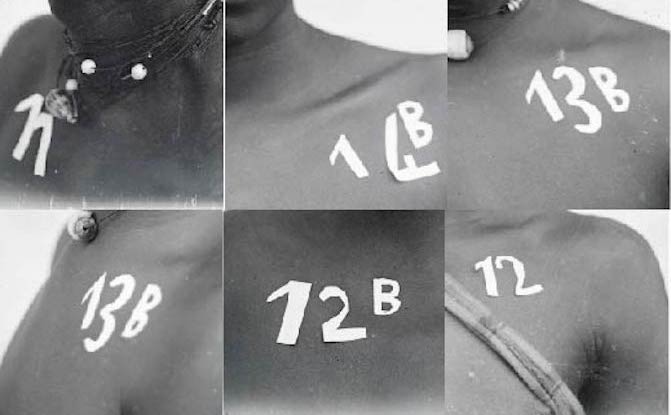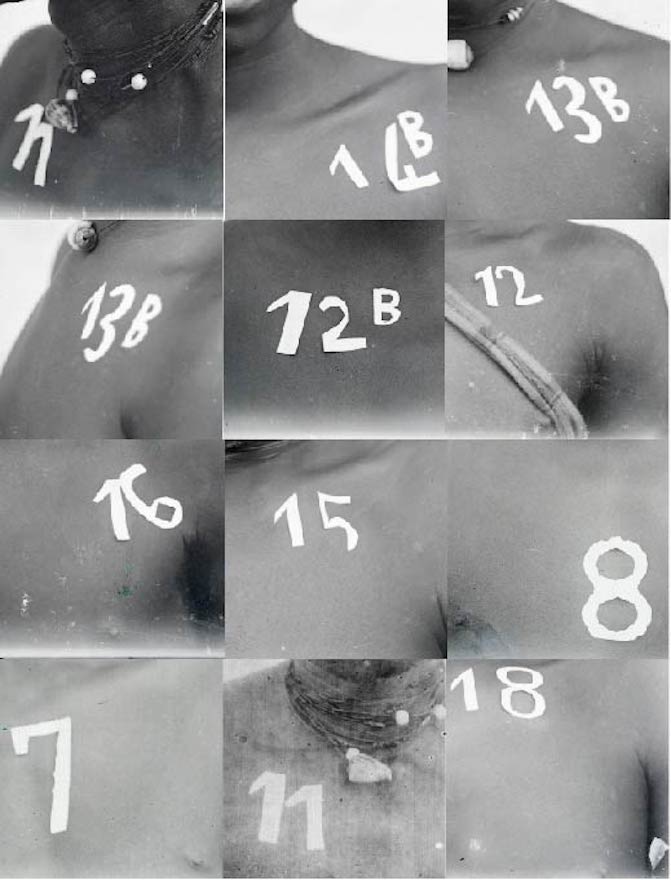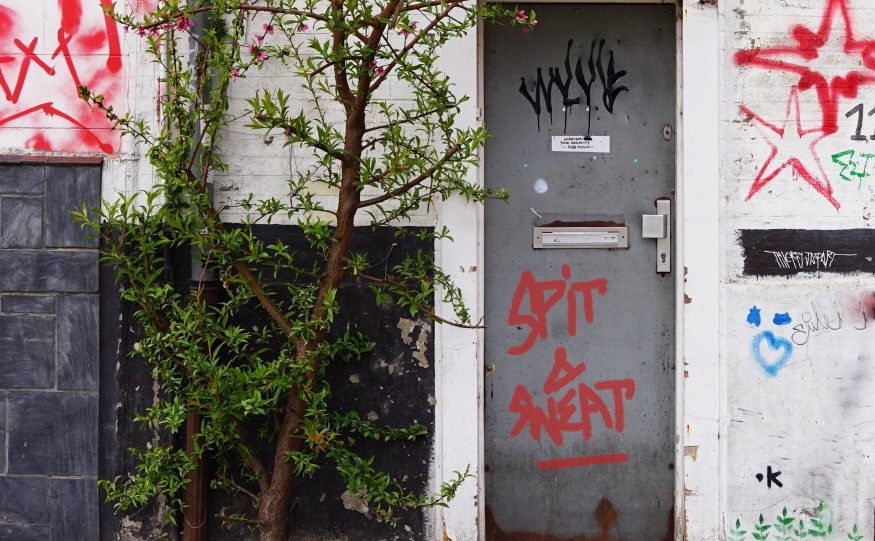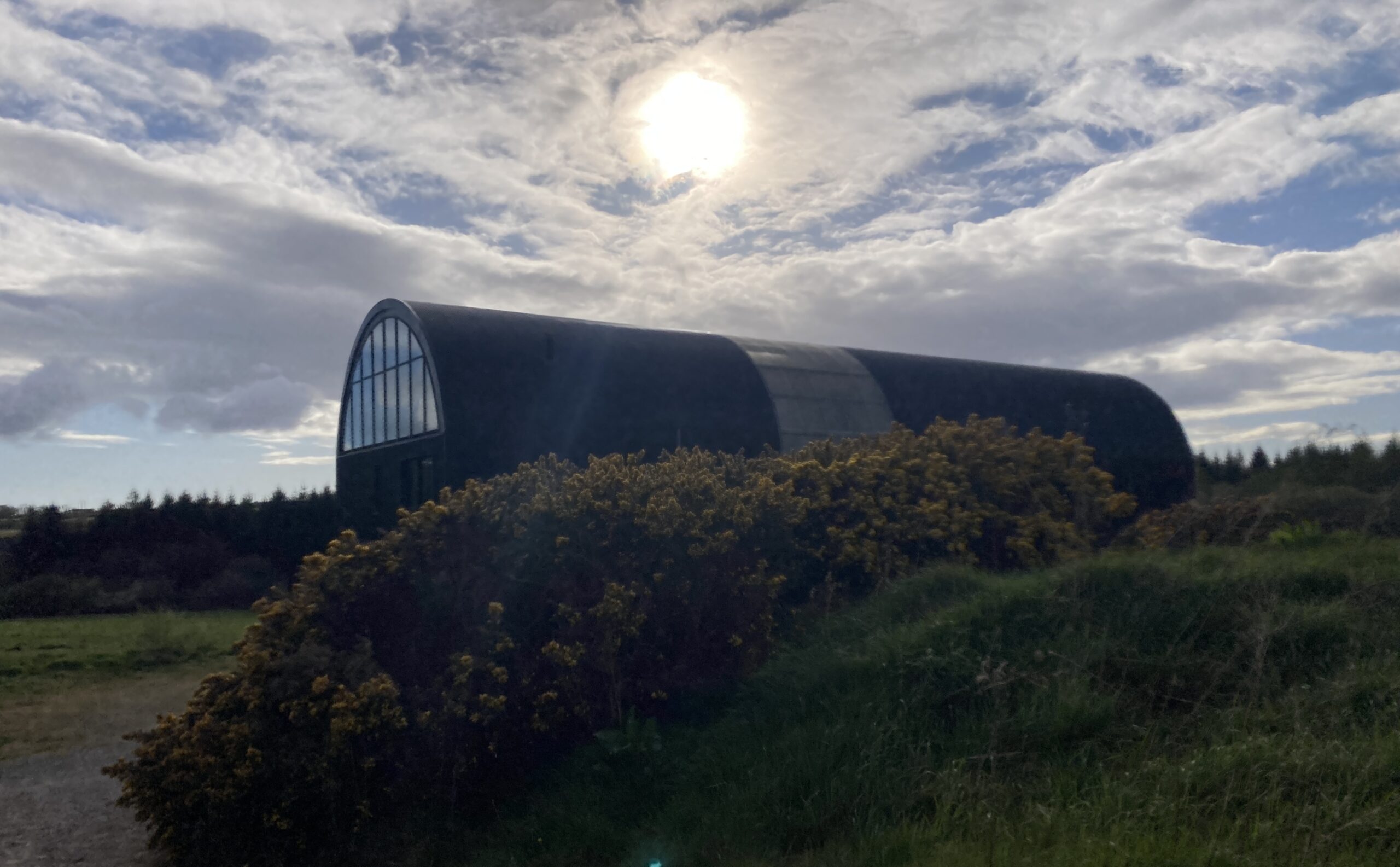21C/19C Procedures for Anthropometric Image Reversal by Antje Van Wichelen
[EN] Through the lenses of 19th-century photographers, visual artist Antje Van Wichelen dives into the clichés and underlying motives of the Western colonial anthropometric photo collections. Using manual 16mm-film development and printing, she re-writes these images and gives us a new, contemporary perspective.
21C/19C Procedures for Anthropometric Image Reversal is an artistic search for an engaged way of dealing with sensitive imagery.
Screenings with debate
During four public evenings, different chapters will be shown on 16mm film. Afterwards, people are invited to join an open conversation.
The second evening takes place at L’Horloge du Sud on Wednesday 22 November, from 7pm to 10pm
The chapter set for the evening is: Numbers and Comments
The chapter ‘Numbers and Comments’ focuses on the archives that house the nineteenth-century colonial photo collections. How were they built up at the time? What is their architecture today? Are they accessible? To artists? To everyone? And what about copyright? Who owns what rights to the pictures? Does that feel fair? The debate also focuses on restitution, a theme that was touched on briefly in the first debate. The question of the return of objects is a recurrent topic in the discussions. But how does that work with photos?
Sound artwork: Rokia Bamba
Moderator: Peggy Pierrot
Guests: Lucia Halder (curator of photography at the Rautenstrauch-Joest Museum – Kulturen der Welt, Cologne), Pascale Obolo (activist, artist and editor-in-chief of Afrikadaa), Kobe Matthys (Agentschap)
21C/19C Procedures for Anthropometric Image Reversal is een zoektocht naar een geëngageerde manier om met deze maatschappelijk gevoelige beelden om te gaan.
Projecties met debat
Tijdens vier publieke avonden worden verschillende hoofdstukken in 16mm film getoond waarna het publiek wordt uitgegenodigd in gesprek te gaan.
De tweede projectie avond vindt plaats bij L’Horloge du Sud op woensdag 22 november van 19u tot 22u.
Het nieuwe hoofdstuk dat aan bod zal komen is: Nummering en Commentaar
Het hoofdstuk ‘Nummering en Commentaar’ gaat over de archieven die de 19de eeuwse koloniale fotocollecties herbergen. Hoe zijn ze destijds opgebouwd? Wat is hun architectuur vandaag? Zijn ze toegankelijk? Voor kunstenaars? Voor iedereen? En wat met copyright? Wie heeft welke rechten over de beelden? Voelt dat rechtvaardig aan? Het debat focust ook op restitutie, een thema dat in het eerste debat al even aangeraakt werd. De kwestie van teruggave van objecten heeft een vaste plaats in discussies omtrent archieven. Maar hoe werkt dat met foto’s?
Klankkunstwerk: Rokia Bamba
Moderator: Peggy Pierrot
Gasten: Lucia Halder (curator fotografie van het Rautenstrauch-Joest Museum Kulturen der Welt (Keulen)), Pascale Obolo (activiste, kunstenares en hoofdredactrice van Afrikadaa), Kobe Matthys (Agentschap)
21C/19C Procedures for Anthropometric Image Reversal est une recherche artistique d’une façon engagée de traiter ces images socialement sensibles.Projections avec débat
Au cours de quatre soirées publiques, plusieurs chapitres sont présentés via un film 16mm, après quoi le public est invité à une discussion ouverte.
Projections avec débat
Au cours de quatre soirées publiques, plusieurs chapitres sont présentés via un film 16mm, après quoi le public est invité à une discussion ouverte.
La deuxième soirée se déroule chez L’Horloge du Sud le mercredi 22 novembre à 19h-22h.
Et les thèmes de discussions sont: Numéros et Commentaires
Le chapitre « Numéros et Commentaires » traite des archives qui abritent les collections de photographies coloniales du 19e siècle. Comment ont-elles été constitués à l’époque ? Quelle est leur architecture aujourd’hui ? Sont-elles accessibles ? Pour les artistes ? Pour tout le monde ? Qui possède quels droits sur les images ? Est-ce que cela semble juste ? Le débat examinee également la restitution, un thème qui a été brièvement abordé lors du premier débat. La question de la restitution d’objets revient de manière récurrente dans les discussions. Mais comment est-ce que cela se passe avec des photos ?
Art sonore: Rokia Bamba


 RELATED
RELATED 
